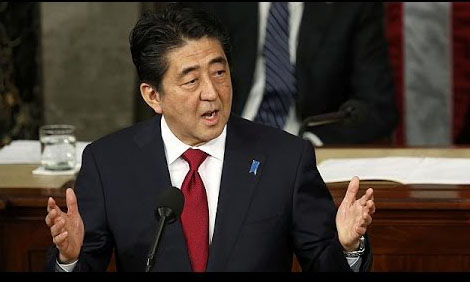FPI / February 12, 2020
By establishing a muscular national security posture, Japan has emerged as a key geopolitical partner with the U.S. to contain China.
In 2015, Japan’s parliament passed a set of national security laws which allow Japan to exercise the right of collective self-defense under certain, though limited, circumstances. Article nine of its constitution states that Japan “forever renounce[s] war as a sovereign right of the nation and the threat or use of force as means of settling international disputes.”

Prime Minister Shinzo Abe’s government has also revised its policies for the transfer of defense equipment and technology and established a new agency in 2015 for weapons procurement and development.
Last August, Japan’s Defense Ministry requested its largest-ever defense budget.
“We will improve defense capability at a speed fundamentally different from the past in order to respond to the security environment, which is changing by a remarkably fast pace,” the defense ministry said.
Japan announced on Aug. 16, 2019 that would purchase six F-35B Lightning II fighter jets from the United States. The F-35B to will replace some of its aging F-15 fighters. The B model is capable of vertical takeoffs and landings.
Japan said it plans to purchase 42 of the stealth fighters in the next 10 years. It also plans to convert two Japan Maritime Self-Defense Force Izumo-class helicopter destroyers to accommodate the F-35Bs.
Army-technology.com, a website produced by a London-based media corporation, ranks Japan’s military at No. 6 in the world, behind France and ahead of South Korea.
More recently, in light of U.S. measures to tighten security control over Chinese investment in U.S. businesses and put telecoms company Huawei and other Chinese companies on its entity list which restricts exports to them, the Japanese government decided to shut out Huawei from Japan’s fifth-generation, or 5G, wireless network.
Abe “has expanded the geopolitical arena for Japan’s engagement from Asia-Pacific to Indo-Pacific,” Takashi Shiraishi wrote in a Feb. 12 analysis for Nikkei Asian Review.
“The implications are clear: because China under President Xi Jinping is likely to create its own sphere to achieve the China Dream of restoring its former glory and becoming hegemonic in the region and beyond, Japan has to work together with the U.S., Australia, India and ASEAN countries to keep the Indo-Pacific region free and open.”
Abe, who has two years remaining in his term, has responded to the changes in the balance of power and wealth in the region “by deepening and expanding the U.S.-Japan alliance, aligning itself with its partners to build a network for security cooperation and expanding its regional framework from the Asia Pacific to the Indo-Pacific,” Shiraishi wrote.
Japan, along with the U.S. and its allies and strategic partners, “continues to hedge the risk of China’s unilateral attempt to change the regional order by force while engaging China in multilateral norm- and rule-building. It is also promoting cooperation in areas of mutual and regional benefits, including infrastructural development,” Shiraishi wrote.
“There is now a broad consensus in Japan on foreign and national security policies, as demonstrated by the unanimous parliamentary approval of the revision of the foreign exchange law and the more than 80 percent public support for government tightening of sensitive technology exports,” Shiraishi noted.
Intelligence Brief __________ Replace The Media
